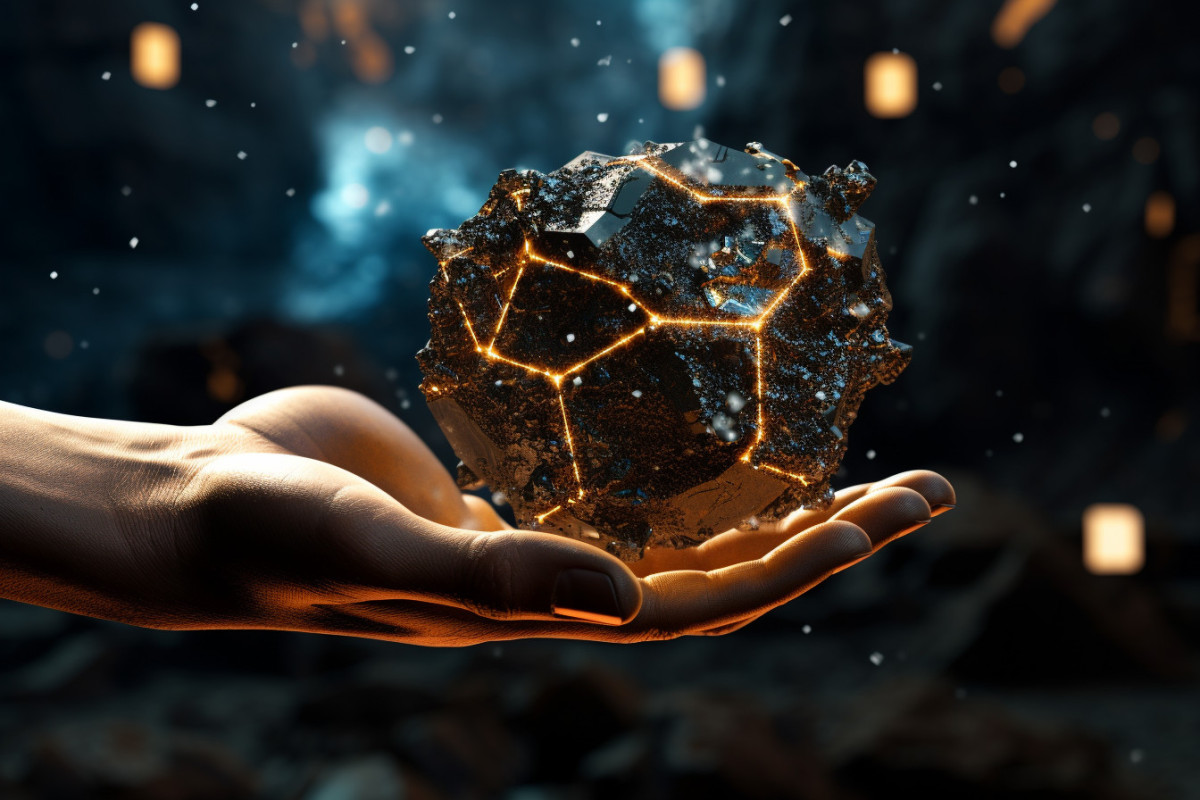In the realm of scientific exploration and resource management, a groundbreaking development has recently emerged. Researchers have successfully harnessed the power of Artificial Intelligence (AI) to uncover a cache of rare earth elements (REEs) hidden beneath the Earth’s surface. This discovery marks a significant milestone, as these crucial materials play a vital role in numerous industries. By leveraging AI’s analytical capabilities, scientists have unlocked new possibilities for identifying and extracting these valuable resources, paving the way for a more sustainable and efficient future.
The Crucial Role of Rare Earth Elements
Rare earth elements, a group of 17 chemically similar elements, hold unique magnetic, optical, and catalytic properties. These elements, including neodymium, dysprosium, and yttrium, are essential components in a wide range of modern technologies. From smartphones and electric vehicles to renewable energy systems and defense applications, the influence of REEs is far-reaching. However, due to their scarcity and strategic importance, the availability and accessibility of REEs have become a global concern.
AI: A Powerful Tool in Mineral Exploration
AI has rapidly emerged as a powerful tool across various fields, and mineral exploration is no exception. By analyzing vast amounts of geological and geophysical data, AI algorithms can identify patterns, correlations, and anomalies that may indicate the presence of valuable mineral deposits. In the case of rare earth elements, AI has proven to be a game-changer, enabling scientists to detect and map underground deposits with unprecedented precision.
The AI-Assisted Discovery Process
The successful identification of hidden rare earth elements using AI involved a multi-step process. Initially, extensive geological data, including rock samples, soil compositions, and historical survey records, were gathered from targeted areas. This dataset was then fed into AI algorithms, which employed advanced machine learning techniques to identify subtle patterns indicative of REE deposits.
The algorithms were trained on historical data from known REE deposits, allowing them to recognize the unique signatures associated with these elements. This training process enabled the AI system to differentiate between ordinary minerals and potential REE-rich zones, greatly enhancing the accuracy of the predictions.
Following the analysis, AI algorithms generated detailed maps and models that showcased the location, size, and composition of the identified REE deposits. These digital representations allowed geologists and mining experts to plan extraction strategies, optimizing efficiency while minimizing environmental impact.
Implications for the Future
The integration of AI into the search for rare earth elements offers several significant benefits. Firstly, it reduces the time and cost associated with traditional exploration methods, which often involve extensive physical surveys and laborious manual analysis. AI can rapidly process vast amounts of data, accelerating the discovery process and improving the chances of successful exploration.
Furthermore, AI-enabled mineral exploration contributes to more sustainable resource management. By precisely pinpointing REE deposits, mining operations can be concentrated in specific areas, minimizing the environmental footprint and reducing the need for widespread excavation.
Moreover, the use of AI in identifying REEs opens up possibilities for identifying other valuable mineral resources. The same techniques that proved successful for rare earth elements can be adapted to locate other sought-after minerals, such as lithium, cobalt, and platinum, which are vital for the production of batteries, electronics, and renewable energy technologies.
The discovery of hidden rare earth elements using Artificial Intelligence represents a remarkable breakthrough in the field of mineral exploration. With AI’s ability to process large volumes of data and identify subtle patterns, scientists and mining experts can now unlock valuable resources more efficiently and sustainably than ever before. As we move towards a future reliant on clean energy and advanced technologies, AI will undoubtedly play a pivotal role in securing the raw materials needed for continued progress and innovation.
Conclusion
The application of AI in science, particularly in the discovery of rare earth elements, is a testament to the transformative power of technology. It’s not just about speeding up processes or reducing costs; it’s about paving the way for a more sustainable and efficient future. As we continue to rely on these valuable resources, the role of AI in ensuring their availability cannot be overstated.
FAQs
1. What are rare earth elements and why are they important?
Rare earth elements are a group of 17 chemically similar elements with unique properties. They are essential components in a wide range of modern technologies, including smartphones, electric vehicles, and renewable energy systems.
2. How does AI help in the discovery of rare earth elements?
AI helps by analyzing vast amounts of geological and geophysical data to identify patterns, correlations, and anomalies that may indicate the presence of valuable mineral deposits. It can detect and map underground deposits with unprecedented precision.
3. What are the benefits of using AI in mineral exploration?
AI reduces the time and cost associated with traditional exploration methods. It also contributes to more sustainable resource management by precisely pinpointing REE deposits, minimizing the environmental footprint and reducing the need for widespread excavation.
4. Can the same AI techniques be used to locate other minerals?
Yes, the same ai techniques that proved successful for rare earth elements can be adapted to locate other sought-after minerals, such as lithium, cobalt, and platinum.
5. What does the use of AI in mineral exploration mean for the future?
The use of AI in mineral exploration signifies a more efficient and sustainable future. As we move towards a future reliant on clean energy and advanced technologies, AI will play a pivotal role in securing the raw materials needed for continued progress and innovation.

